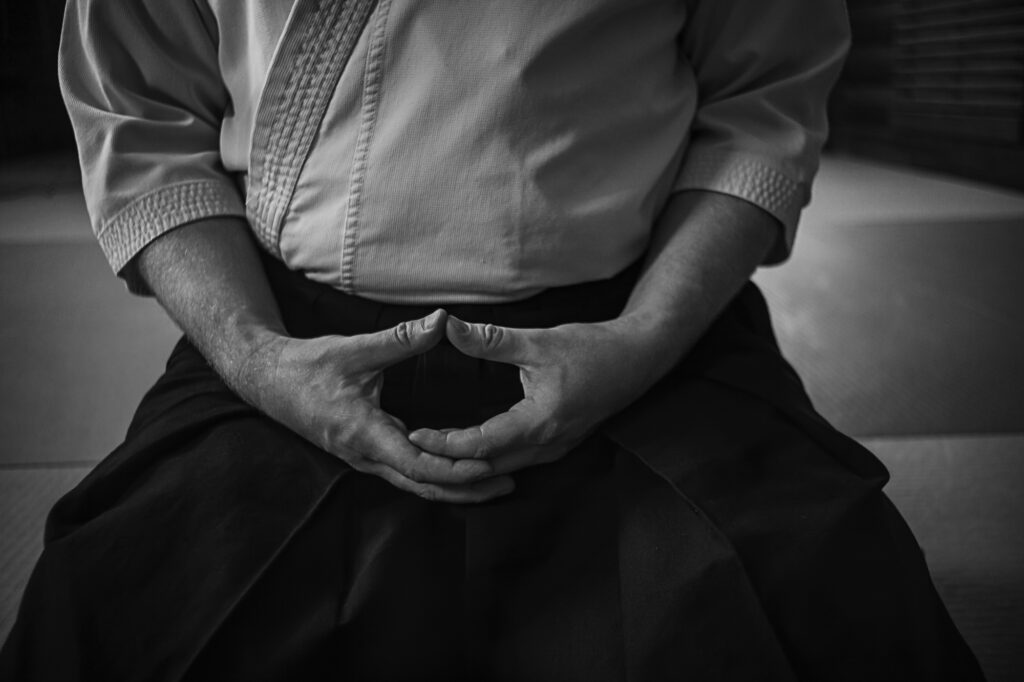Etiquette is a big deal in Japan, and the Japanese people are well-known for the high value they place on proper manners and consideration towards others. If you’re planning to visit Japan, brushing up on the country’s unique rules of etiquette is a smart idea, as the Japanese appreciate tourists who show respect and appreciation for both people and customs.
One of the most important considerations when it comes to etiquette in Japan is how to sit. In Japan, you need to be mindful of both how and where you sit, and the proper way to do it often depends on the setting and situation you’re in.
Sitting might not be something you think twice about—but in Japan, it requires a little extra thought. Read on to learn the proper way to sit in Japan, so you can be a respectful visitor on your once-in-a-lifetime journey!

Seating practices are rooted in respect
Seating is symbolic and important in Japan. Like most everyday etiquette practices engrained in Japanese culture, sitting is deeply rooted in a tradition of respect. Not only does how you sit matter, where you sit matters, too. Seating etiquette is important in several everyday situations, from business meetings to tea ceremonies—and even when enjoying a dinner in someone’s home.
In Japan, where and how you sit is situational, with traditional positions and seating protocol to match the situation. Let’s explore some of them.
Sitting Seiza: formal sitting on tatami floors
The most “proper” way to sit in Japan, you’ll use the seiza position when sitting on tatami floors. To politely sit in this kneeled position, place your knees on the floor and rest both buttocks on the tops of your feet, with your feet flat on the floor.
As you might expect, sitting seiza can be painful or uncomfortable if you’re not used to it. While the position is best learned at a young age, you can sit seiza regardless of how old or young you are. Practice this position before you travel to Japan, as you’ll be expected to sit seiza when you attend a traditional Japanese tea ceremony or visit a temple—two things you must do during your journey!
Luckily, the Japanese are understanding, and foreigners aren’t required to sit seiza for an extended period of time. Show respect by sitting seiza when you can, but don’t feel bad if you need to take a break. You can also ask for a seiza stool, which are common in situations where you’re asked to sit for longer periods of time.
Casual sitting: cross-legged positions
In most casual situations, sitting cross-legged is polite in Japanese culture. Men often sit completely cross-legged, while women typically sit with both legs to one side. Keep in mind, though, that these two seating styles conform to traditional gender norms, with the former considered exclusively male and the latter exclusively female.
Today, many people have moved away from gender norms. That said, in Japan, sitting cross-legged or with your legs to the side is still common practice, split down gender lines. If you don’t feel comfortable conforming, the most respectful option is to sit seiza. Beyond that, sitting cross-legged is becoming more and more acceptable for both genders.
Keep in mind that sitting cross-legged is only applicable when sitting on the floor. It’s actually considered rude to sit cross-legged or with your legs up when sitting in a chair or on a stool. In these situations, allow your legs to dangle freely, sitting normally in an upright position.
Alternative sitting positions
While seiza is the formal, traditional way of sitting and cross-legged sitting is common, there are a variety of other positions you might find yourself observing in Japan, including:
- Agura. This is essentially cross-legged sitting, in the context of a low table seating arrangement. It’s an informal way of sitting.
- Yokozuwari. Translated as “sideways sitting,” this is common for individuals in formal attire—especially women wearing kimonos. It involves sitting with both legs to one side.
- Wariza. This style of sitting is an informal posture for women. It’s similar to seiza, but with the posterior on the floor and the feet on both sides, legs forming a “W.”
- Kiza. This is a style of seiza with the toes bent and the heels propped up, with the posterior lifted off the legs. It’s rarely used outside of martial arts presentation.
While you’re unlikely to sit in any of these positions as a tourist, it can be helpful to understand how they differ from more common positions and where the distinction is when it comes to assuming the appropriate position for your situation.
Seating posture: sitting up straight
Along with sitting technique, posture is also important in Japan. You’ll be expected to sit upright, with good posture throughout the duration of your seated experience. Slouching, hunching or other forms of poor posture can give off the impression that you’re uninterested or undisciplined. Here’s how to sit up straight in various positions:
- Sitting seiza. With your posterior resting on your feet, elongate your spine and bring your torso to a full upright position. You can brace yourself in this posture by gently resting your hands on the tops of your thighs for support. Remember, you likely won’t have to sit seiza for extended periods of time, so if this posture brings you discomfort, it’s only very temporarily.
- Sitting cross-legged. It’s often difficult to maintain a strong-backed posture while sitting cross-legged. For women sitting with their legs to the side, bracing your hands on your thighs can provide support. For men who are completely cross-legged, try to elongate your spine and push your navel forward slightly to maintain a straight back.
- Sitting in a chair. Sitting upright in a chair is easy because you’ll have the back of your chair to brace against. Position your posterior at the back of the chair and use the back support to help you lift and elongate your spine.
In any of these positions, the key to good posture is to lift your chest and throw your shoulders back. If you practice this regularly, you’ll find that it takes less concentration to achieve good posture while you sit in Japan.
What if I can’t sit upright?
Many people can’t maintain an upright posture for one reason or another, such as a disability, medical condition or age. Don’t worry! So long as you attempt to seat yourself appropriately, you won’t offend anyone. It’s also okay to inform your host of any mobility restrictions that prevent you from sitting on the floor or in a certain configuration. The Japanese people are very tolerant of these restrictions and will make accommodations.
Seating etiquette: terms to know
Aside from seating positions, there are other norms of seating etiquette you need to know before you visit Japan. In particular, where to sit is an important courtesy to the Japanese people. This isn’t something most tourists need to actively think about because they’re likely to visit venues with guided or assigned seating. However, if you’re in the country on business or have relocated to Japan for work, where you sit becomes an important factor to consider.
When you’re in the company of coworkers, customers, elders, etc., you should have an understanding of seating protocol, so you show respect to and hospitality to superiors—it simply involves being considerate. In general, seats are broken down into two categories:
- Kamiza. The safest, most comfortable seats are “kamiza.” They’re usually reserved for well-respected people, like executives in a company or guests visiting a house. This seat is often the furthest from the entrance to the room, and is usually greater in height than the other, lower seats.
- Shimoza. Reserved for people of lower rank or position, like new employees or young children, shimoza seats are often located near the entrance of a room. They’re positioned lower in height than kamiza.
Kamiza and shimoza not only apply to seating arrangements, they also refer to positions and seats in cars and elevators. There’s a further hierarchy for left and right sides, helping determine the seating order in particular situations. It’s about where you’re located within a space in the context of other people you’re sharing the space with.
Seating arrangements can get quite complex in Japan—when in doubt, don’t be afraid to ask. Your Japanese hosts will appreciate the care you take to follow and respect their customs. The concept can be tricky at first, but eventually, it’ll come naturally if you’re forced to think about it often.
Make sure you know where and how to sit
Seating etiquette is important in Japanese culture, in terms of sitting pose, arrangement and much more. Where and how you sit, as well as your posture, can show that you’re an attentive person who’s familiar with the customs and expectations of the culture you’re immersing yourself in.
Before you visit the country, brush up on the rules of sitting etiquette described above to be a respectful tourist. Not only will it make your stay more pleasant, you’ll further immerse yourself into the culture and traditions that are uniquely Japan!
- How Much Money Can You Make Teaching English in Japan? - December 12, 2022
- The Best Places to Teach English in Japan - December 9, 2022
- The Best Credentials for Teaching English in Japan - December 8, 2022







